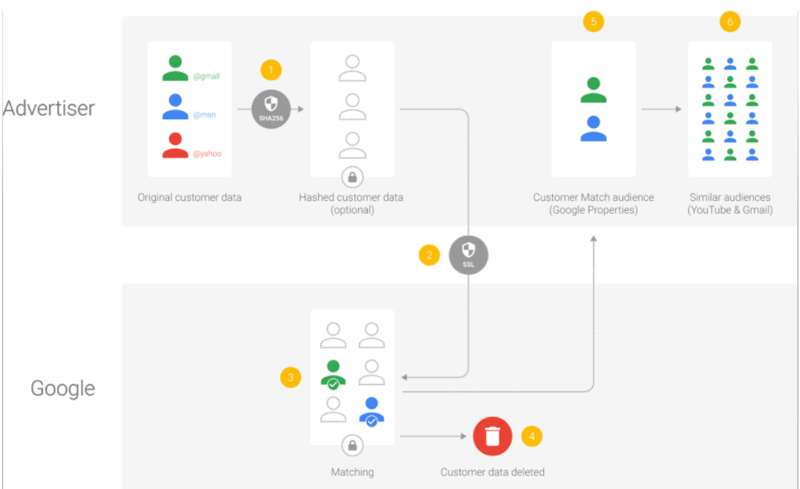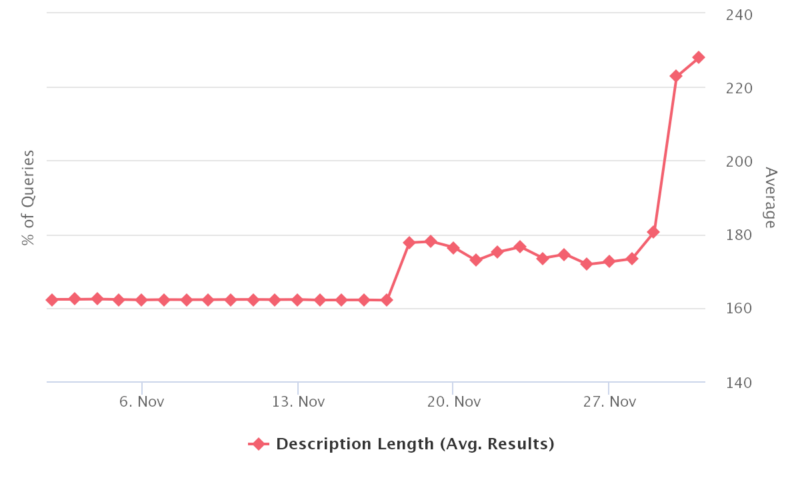
In online marketing, few strategies are as competitive or as quickly evolving as search engine optimization (SEO). Marked by a history of algorithm updates, new technologies, and new techniques to win real estate at the top of search engine results pages (SERPs), most SEO experts (like me) chomp at the bit to predict or learn the latest trends that will shape our businesses’ digital futures.
Though algorithm updates were few and far between, 2017 was still an exciting year for SEO, and I’m anticipating even bigger changes on the horizon for 2018. Based on my observations, some trends that unfolded through the end of 2017, and some speculation on some newly unfolding technologies, I’ve come up with a list of predictions for the trends I think will dominate the SEO field in 2018:
1. Video and image search will vastly improve. Gradually, our online interactions have evolved to become more visual. Over the past few years, faster internet speeds, more visual-friendly social media platforms, and a general public desire to engage with more images and videos has led to a surge in visual online interactions. Accordingly, I think we’ll see some changes to how Google and other search engines treat images and videos in an online environment. New startups like Moodstocks and Eyefluence (both of which were acquired by Google) have sought to recognize visual elements within images and videos more accurately, or have sought to improve user interactions with them. I’m not sure what changes these startups foretell, exactly, but I bet we’ll see a vast improvement in search sophistication for visual assets.
2. The Knowledge Graph will dominate. For a few years now, Google has been steadily increasing the frequency and specificity of featured snippets—the concise answers to questions users pose in their search queries. Yet, just last month, the frequency of featured snippets declined significantly, apparently replaced by equivalent answers found in Knowledge Graph boxes. I think this event could portend the rise and eventual dominance of Google’s Knowledge Graph, replacing a good chunk of the space currently occupied by featured snippets in an effort to provide users with even better, more consistent answers.
3. Voice search will sharply increase with the rise of smart speaker sales. Do you have a smart speaker? If you don’t, I bet you know at least a few people who do. Smart speaker sales, like those for Amazon Echo and Google Home, surged in 2017, and sales will probably grow further in 2018 as newer models start to roll out. Because these speakers are activated by voice, and provide spoken search results, users are getting even more used to interacting with search engine results with only their voices and their ears. This could drastically change the types of queries we see, and reshape the way businesses think about SERPs (since they may no longer be as visual).
4. Individual customization will change the way many rankings are calculated. Google has been pushing the development of more personalized search results for the better part of a decade, relying on individual search histories, browser cookies, and other information to give better, more customized SERPs for individuals. With the advent of smart speakers, the increased convenience of search, and greater technological sophistication, the personalization factor will likely increase even further in 2018, making it more difficult to predict how your company will rank—or what you’ll rank for.
5. Machine learning will spell the end of traditional search algorithm updates. RankBrain remains Google’s deepest dive into machine learning—at
least in how it pertains to its search algorithm. But Alphabet,
Google’s parent company, has invested heavily in machine learning and AI
over the past several years. Though Google hasn’t released any official
news about when or if it plans to roll out more machine learning
updates to its core algorithm, my guess is by the end of 2018, we’ll see
a greater influence of machine learning over typical search results.
Eventually, though it will probably be years from now, we may see
algorithm updates fade away entirely, in favor of an automated,
continuous and iterative algorithm updating process carried out by
machine learning.
6. SEO will expand beyond Google and Bing. Over the past few years, I’ve seen an increased trend of companies competing for ranking space outside Google. Google still dominates the search engine sphere, remaining the most popular search platform by far, but third-parties like Yelp and Amazon, as well as digital assistants like Siri have stepped in to become relevant search engines in their own right. If you want to be found by a greater percentage of user searches, and introduce yourself to the widest audience possible, in 2018, you’ll need to begin to think beyond Google’s range of influence.
7. Hyperlocal results will finally take off. I anticipated 2017 to be the first major year for hyperlocal marketing (as did several other experts); I wasn’t wrong about the increased influence of local search and local SEO, but the world wasn’t ready for hyperlocal intent to become the new normal. By “hyperlocal,” I’m referring to the process of targeting customers (or presenting search results) based on physical proximity, down to less than a block radius. I imagine by the end of 2018, with more mobile use than ever before and the rising relevance of VR and AR, companies currently involved in local SEO will need to do more to target hyperlocal keywords and optimize for even more locally relevant appearances.
I feel some of these predictions are “sure bets,” bound to unfold soon, even if they don’t take hold early in 2018. Others are a little riskier, but I’m personally going to start pursuing them (or at least start brainstorming how I could take advantage of them). If you’re interested in seeing how these trends develop, stay tuned to your favorite SEO communities, and take note of any aberrations in your own sets of data.
I don’t think 2018 will be a highly volatile year for the SEO industry, but it could certainly bring some changes that shake up the game. For help improving your website’s SEO in a way that’s future-proof, see 101 Ways to Improve Your Website’s SEO.
Reference:https://www.forbes.com/sites/jaysondemers/2017/12/26/7-seo-trends-that-will-dominate-2018/#45cd1593139e
6. SEO will expand beyond Google and Bing. Over the past few years, I’ve seen an increased trend of companies competing for ranking space outside Google. Google still dominates the search engine sphere, remaining the most popular search platform by far, but third-parties like Yelp and Amazon, as well as digital assistants like Siri have stepped in to become relevant search engines in their own right. If you want to be found by a greater percentage of user searches, and introduce yourself to the widest audience possible, in 2018, you’ll need to begin to think beyond Google’s range of influence.
7. Hyperlocal results will finally take off. I anticipated 2017 to be the first major year for hyperlocal marketing (as did several other experts); I wasn’t wrong about the increased influence of local search and local SEO, but the world wasn’t ready for hyperlocal intent to become the new normal. By “hyperlocal,” I’m referring to the process of targeting customers (or presenting search results) based on physical proximity, down to less than a block radius. I imagine by the end of 2018, with more mobile use than ever before and the rising relevance of VR and AR, companies currently involved in local SEO will need to do more to target hyperlocal keywords and optimize for even more locally relevant appearances.
I feel some of these predictions are “sure bets,” bound to unfold soon, even if they don’t take hold early in 2018. Others are a little riskier, but I’m personally going to start pursuing them (or at least start brainstorming how I could take advantage of them). If you’re interested in seeing how these trends develop, stay tuned to your favorite SEO communities, and take note of any aberrations in your own sets of data.
I don’t think 2018 will be a highly volatile year for the SEO industry, but it could certainly bring some changes that shake up the game. For help improving your website’s SEO in a way that’s future-proof, see 101 Ways to Improve Your Website’s SEO.
Reference:https://www.forbes.com/sites/jaysondemers/2017/12/26/7-seo-trends-that-will-dominate-2018/#45cd1593139e




 Google has confirmed what many in the search industry have seen over
the past week, updates to their algorithm that are significantly
shifting rankings in the SERPs. A google spokesperson told Search Engine
Land “We released several minor improvements during this timeframe,
part of our regular and routine efforts to improve relevancy.”
Google has confirmed what many in the search industry have seen over
the past week, updates to their algorithm that are significantly
shifting rankings in the SERPs. A google spokesperson told Search Engine
Land “We released several minor improvements during this timeframe,
part of our regular and routine efforts to improve relevancy.”





 Understanding voice search queries could help us better understand
the types of queries that surface featured snippets. As marketers, we
could then devote time and resources to providing the best answer for
the most common featured snippets in hopes of getting promoted to
position zero.
Understanding voice search queries could help us better understand
the types of queries that surface featured snippets. As marketers, we
could then devote time and resources to providing the best answer for
the most common featured snippets in hopes of getting promoted to
position zero. An example of the second is “near me” queries, which have grown
dramatically with mobile search and mostly occur on mobile phones:
An example of the second is “near me” queries, which have grown
dramatically with mobile search and mostly occur on mobile phones: The mode of search therefore changes search behavior as searchers
understand what types of searches work well on mobile but not on
desktop.
The mode of search therefore changes search behavior as searchers
understand what types of searches work well on mobile but not on
desktop.


 The
addition of phone numbers and mailing addresses opens up more
opportunities for marketers that don’t have large sets of email
addresses to leverage their own first-party data — from catalog and call
center sales, for example — in Google campaigns.
The
addition of phone numbers and mailing addresses opens up more
opportunities for marketers that don’t have large sets of email
addresses to leverage their own first-party data — from catalog and call
center sales, for example — in Google campaigns.











 Over the past week or so, many have
Over the past week or so, many have  Some webmasters and SEOs may consider updating their meta
descriptions, but I don’t believe Google would recommend doing so. The
snippets are more often dynamically generated based on the user query
and content found in both the meta description and the content visible
on the page. If Google is going to go with a longer snippet, it likely
will pull that content from the page.
Some webmasters and SEOs may consider updating their meta
descriptions, but I don’t believe Google would recommend doing so. The
snippets are more often dynamically generated based on the user query
and content found in both the meta description and the content visible
on the page. If Google is going to go with a longer snippet, it likely
will pull that content from the page.



